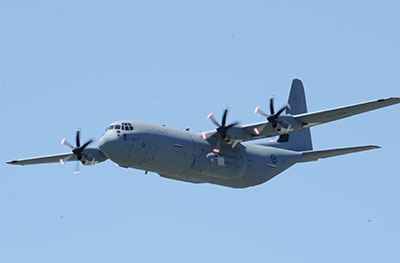
Features
Operations
At the gate: Outlining Canada’s military role
As Commander of the Royal Canadian Air Force (RCAF), Lieutenant-General Yvan Blondin has 14,000 people working for him whom he calls the “cream” of what Canada has to offer and who are proud to be serving their country.
May 6, 2014 By Brian Dunn
As Commander of the Royal Canadian Air Force (RCAF), Lieutenant-General Yvan Blondin has 14,000 people working for him whom he calls the “cream” of what Canada has to offer and who are proud to be serving their country.
 |
|
| “We’re a small group compared to the Americans, but we’re bloody good.” PHOTO: RCAF
|
“We’re a small group compared to the Americans, but we’re bloody good,” he said during a luncheon speech to the Montreal Council on Foreign Relations. “The best in the world,” he said, citing relief efforts in Haiti and missions in Afghanistan with limited resources.
Today’s reality is different from what it was 20 years ago with more relief efforts and conflict zones and his troops are seen as a diplomatic tool and a tool of international relations. “We’ve had success in the past and we will repeat that success,” he said. “The government depends on us. We will continue to do our job, even when budgets are squeezed.”
One thing Blondin has going for him is new technology and he can do more with less using simulation. “I could cut my costs by 30 per cent if I had more access to simulators,” he said. “There are things I can do in a simulator that I actually can’t do in flight. The technology allows better detection around the aircraft as well as of other aircraft.”
The advantage of the F-35 fighter that Canada is looking to acquire, for example, is not its manoeuvrability but its superior detection capabilities. It detects radar, it detects missiles, and it detects other aircraft that it can avoid. That type of detection is also available in a simulator, Blondin noted.
The RCAF boss also wants closer collaboration between the military and industrial sectors to come up with Canadian solutions to Canadian problems, which resulted in the creation of New Horizons, a new Canadian defence program to get all sectors working together.
“We want to be so pure in Canada — ‘let’s not talk to each other,’ ” Blondin said. “We develop our needs in secret and then we exclude Canadian industry. All other countries co-operate between the military and industry.”
The result in Canada, he said, can be endless procurement contracts such as search-and-rescue helicopters. Blondin also set the record straight on a question from the audience about the role UAVs play and whether they would eventually replace fighter aircraft. Some reports in Quebec are concerned about the future of the Bagotville air force base that operates a squadron of CF-18 fighter jets and employs hundreds, speculating that it would be replaced by a fleet of UAVs or drones.
“The media tends to give the image of drones as revolutionary and that we should replace everything with drones now,” he said. “But they are a complementary capacity. They can’t replace jets altogether. The weakness of drones is that they are attached by an umbilical cord to satellites. If that satellite is taken out or its signals are intercepted, I lose my entire fleet of drones.
“And their visibility is two-dimensional. So we’re a long way off from replacing jet fighters. They are useful when there is no military threat, but they are marginal, not a major replacement. Certainly they’ll be used more and more over time, but it will be an evolution. We’re talking about 50 years, not 10.”
It was also suggested the Canadian military could work more closely with the U.S. military, but Blondin dismissed the notion, saying Canada needs its independence on international decisions or conflicts, especially when some countries are hostile to an American presence.
The plea for more simulators pleased Marc Parent, president of CAE who shared the head table with Blondin.
“To me, the real message is, like a lot of sectors in aerospace, Canada is the world leader . . . and it’s great that it’s being recognized. We won, for example, the contract for the C-130J with Canadian Forces. Since then, we’ve won 20 contracts internationally. I can tell you we wouldn’t have had half those contracts if Canada hadn’t bought from their own country. The argument being, “If your own forces haven’t bought it, why should we?”
While not the first customer of the C-130J simulator, it was the context in which Canada is using it, Parent pointed out.
“If you look at where they put this capability . . . Canada has the most modern air warfare training centre in the world in Trenton. It’s not just CAE, but other companies that we had on the team that made that capability happen. And now, we’re in a position to export that capability. I think Canada wants to do more of that.”
Brian Dunn is a Wings writer and columnist.